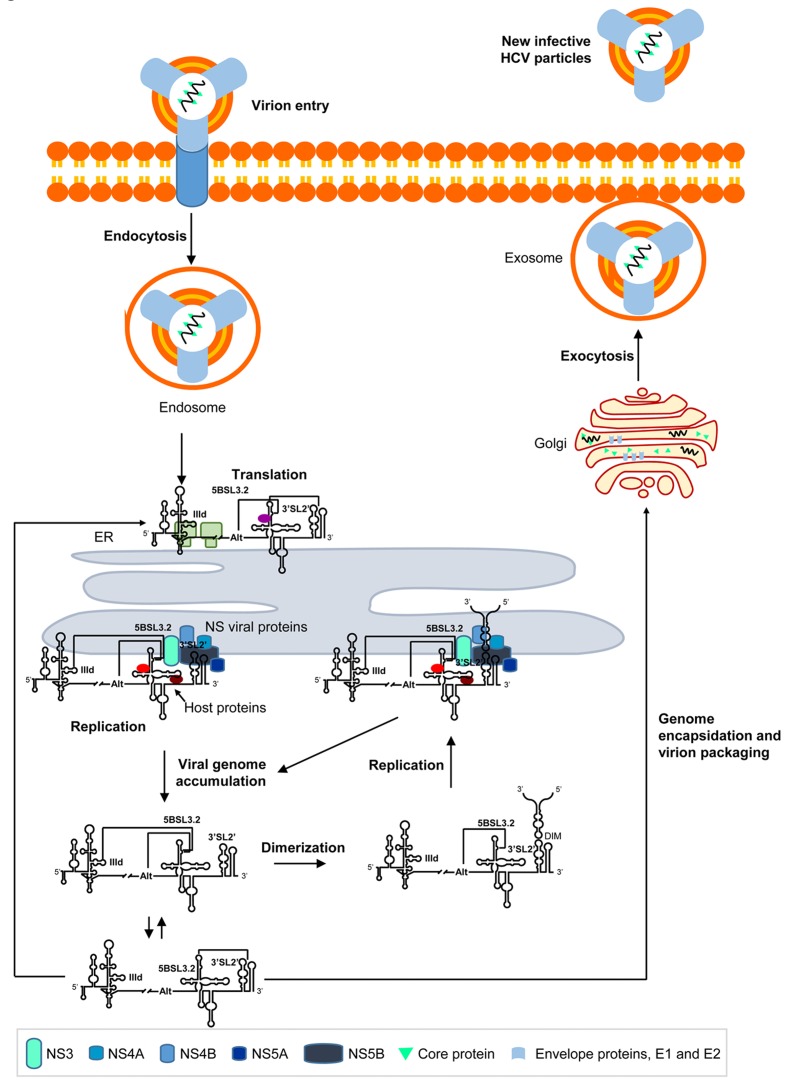FIGURE 6.
Long-range RNA–RNA interactions regulate the different steps in the HCV infective cycle. The figure shows a working model demonstrating the long-range RNA–RNA interactions in the HCV genome described to date, and their role in the progression of the infective cycle. Briefly, during early infection, the viral genome is released to the cytosol and viral translation initiates in an IRES-dependent manner on the surface of the endoplasmic reticulum (ER). Subdomain IIId is then occupied by the 40S ribosomal subunit, which impedes the interaction IIId-5BSL3.2 and enhances the conformational rearrangement at the 3′ end mediated by the 5BSL3.2 domain. The accumulation of NS viral proteins induces the formation of replication complexes, which preferentially recruit viral genomes showing the interaction IIId-5BSL3.2 or Alt-5BSL3.2. This contact favors a translationally repressed-state and enhanced replication dependent on the interaction Alt-5BSL3.2. It also interferes with the formation of dimeric genomic particles. The accumulation of newly synthesized HCV RNA genomes induces the initiation of new rounds of translation. The dimerization process is thermodynamically favored under these conditions, and the dimeric genomes produced offer optimal templates for viral replication. Alternatively, a fraction of the HCV RNA molecules is encapsidated and released to the extracellular medium by exocytosis.

